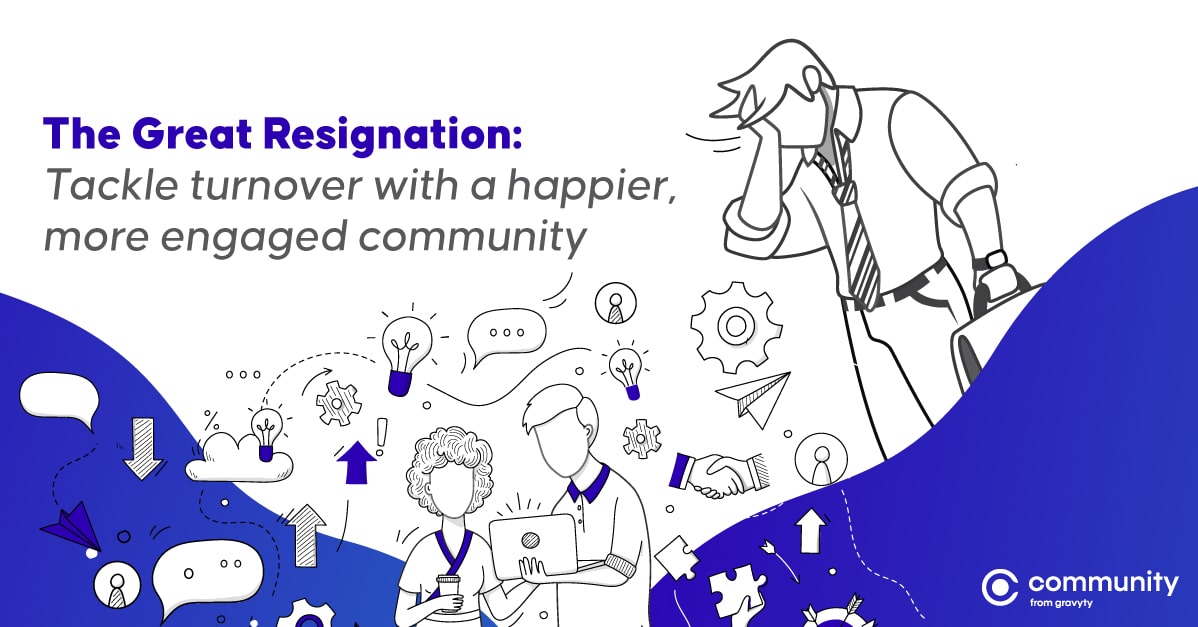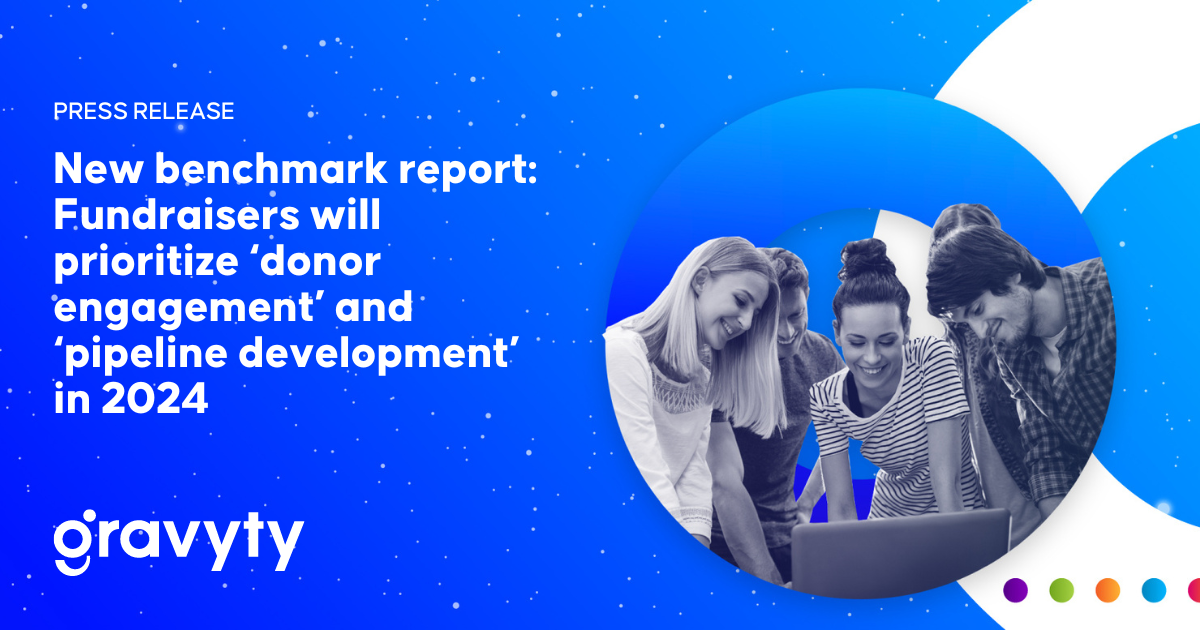The Great Resignation: Tackle turnover with a happier, more engaged community

The global pandemic has caused many companies and organizations to rethink the way they do things. Reorganizing the structure and atmosphere of a workplace is crucial when times call for a more flexible approach.
Isolation was something we all experienced during the peak of the pandemic. Everyone craved being part of a community to feel a sense of belonging. Workplace culture changed to fit their employees’ new lifestyles of now having to work remotely—sometimes with kids at home.
THE GREAT RESIGNATION
Tackle turnover with a happier, more engaged community
Engaging community members during a pandemic
As a company or organization, finding creative ways to cheer up employees during those trying times was also something that many organizations adopted, like sending gifts or activities to do at home and short videos of encouragement.
There is so much strength and power in a positive and supportive work culture that engages their employees and makes sure they feel part of a community.
The next challenge: The Great Resignation
Now that we are in a new normal, companies are facing a different kind of challenge—the Great Resignation. Luckily, the Great Resignation presents an opportunity to do good as an organization.
It’s not surprising the Great Resignation has closely followed the pandemic.
The pandemic forced millions of workers to shift from working 9-5 in the office, to learning how to work from home, and this new way of working has caused companies around the world to wonder if employees can really be as productive (and engaged) in a remote work environment.
In fact, productivity did increase and companies like Meta, Shopify, Twitter and Basecamp announced they will embrace the remote work model also after the pandemic was over.
The fall of engaged employees
Then when the pandemic started to show signs of slowing down, more and more companies started examining the ways in which to bring their workers back to the office full time.
What many companies didn’t realize at first was the fact that after almost two years in isolation, from one lockdown to the next, people began to live their lives differently and their priorities shifted. Many workers were not willing to go back to their normal work schedule after seeing that there is a way to work from home and stay productive. Workers felt that they had to have more flexibility and a work-life balance that better suited them after being home for almost two years.
According to Anthony Klotz, Associate Professor at Texas A&M University, who coined the term “The Great Resignation” predicted a post pandemic surge in employee resignations. In March 2021, a Gallup poll suggested that 48% of U.S. workers were not engaged or actively disengaged leading to 3.6 million resignations in the month of May, 2021 alone.
According to Klotz, organizations who are not willing to provide flexible, fully remote or hybrid work schedules will face higher levels of resignations. Companies might be making a mistake to assume their workers will be fully satisfied to return to a pre-pandemic work environment.
The leading force in the balance between work and home today, especially when trying to tackle the Great Resignation, is the hybrid model of work. Allowing your employees to decide when to work from home and from the office, or setting which days are office days and which are home days is a route many companies are taking.
One of the departments facing the greatest challenge with employee satisfaction and retention is human resources. Truth be told, most companies are not fully equipped to handle the challenge of providing guidance, requirements and best practices for working from home or a hybrid of the office and home. There are employees that will prefer to work from home 100% of the time and there are those who would want to only work from the office, feeling that they are more productive outside of their home environment. And then there are those, of course, who would like the balance of having both.
THE GREAT RESIGNATION
Tackle turnover with a happier, more engaged community
How to tackle the Great Resignation? Keep employees engaged
At the end of the day, people want to work in a place that will see them as people above anything else. A place that will acknowledge that their career is interconnected to their life and respects that balance. A company that trusts their employees and even empowers them to get the job done from home or from the office.
According to Elite Creative, there is tremendous potential in the Great Resignation:
“When you offer people trust and flexibility, they return that trust with loyalty and commitment to your company. Ultimately, that leads to less turnover, less new-hire training, and stronger teams with long-term working relationships.”
Elite Creative
Besides allowing your employees to work from home and have a balanced work life environment, there are four things to also keep in mind when developing an employee engagement and satisfaction strategy.
1. Employees are people. They want to belong to a community.
Employees these days want to feel a sense of belonging to a community. They want to feel that they are doing good in the world and that they are part of a company that values giving back and standing behind causes that are important to them. Community from Gravyty enables organizations and companies to build, manage and scale digital member communities to keep employees and members engaged and connected.
2. To improve satisfaction, employees must feel engaged.
In light of mass resignation and employee dissatisfaction, it’s vital companies make their employees feel engaged through activities and initiatives happening in the company, personal milestone celebrations and mentoring new employees.
3. Involve employees in your Corporate Social Responsibility (CSR).
CSR can be an exciting cause to involve employees in, allowing them to volunteer, participate or even donate to causes important to them and the company. This gives employees a sense of ownership and pride, knowing their company is doing something to contribute to the greater good—with their help. According to the Harvard Business Review:
“93% of employees who volunteer through their company report being happy with their employer.”
Harvard Business Review
4. Actively invest in your employees.
The importance of developing your employees professionally is a great way to retain and engage your employees. When you invest in your employees, they will want to invest in you. Offering employees with personal development opportunities like certifications, courses and conferences will make them feel valued and willing to work harder for your organization.
Investment also means rewarding employees monetarily. According to new Pew Research on this topic, people who had a low salary felt that they lacked opportunities for advancements and not feeling valued were some of the main reasons for many to quit their jobs during the last two years. The research found that those who quit and found new jobs will stay at their current employer where there is better pay, more opportunities to develop and more of a work-life balance environment.
Want to learn more about how Community from Gravyty will engage your employees and in return keep them happy, involved, enriched and motivated? Get a demo.



